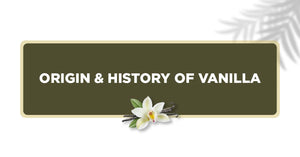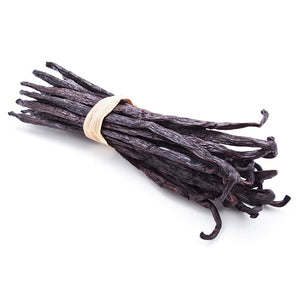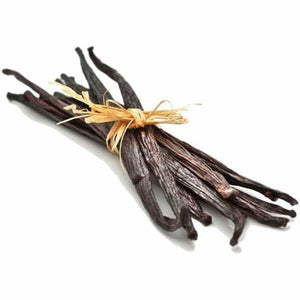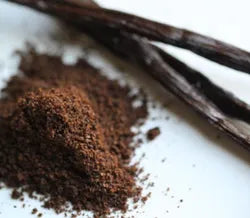Vanilla is one of the flavors that people commonly enjoy, along with chocolate. It is the flavor that we associate with the aroma of freshly baked cookies and cakes, the cosiness of a family gathering, or a festival. Most people would agree that vanilla is the only flavor in the world that even comes close to it. The range of foods that employ vanilla as a flavoring—desserts, milkshakes, and even Savoury dishes that are the main course in many cuisines—evidences its international popularity.
Vanilla is one of the most vibrant flavors that can be utilized in a recipe and is a necessary component of the majority of baked goods. It enhances the flavor of chocolate and is frequently used to give cakes more depth and flavor. It is widely used despite being the second-most expensive spice in the world, right after saffron.
Either Vanilla extract or vanilla essence can be used to add vanilla flavor to food. Vanilla essence and extract are frequently confused for one another. The truth is rather different. There are significant differences between vanilla essence and vanilla extract. A baker can make a tremendous error by substituting one for the other, which will significantly alter the result and possibly greatly affect the taste and texture.
Despite having similar names, they differ in terms of how they can be used, how they taste, and most importantly, how much nourishment they provide. They are made in two very different methods, one of which occurs more naturally than the other.
How is vanilla extract made?
Vanillin, a substance present in vanilla beans, is what gives vanilla its flavor. On the vanilla climbing orchid, pod-shaped fruits called vanilla beans grow.
There are several methods for creating vanilla extract. The alcohol approach and the inverted sugar method are the two most popular ones. The vanilla bean is soaked in a mixture of water and either ethyl alcohol or inverted sugar to create the Vanilla extract. Another approach is to glycerin-soak vanilla pods.
Many businesses employ the procedure of extracting vanilla using ethyl alcohol, which is also promoted as a do-it-yourself way to make vanilla extract. For the extraction to be complete, vanilla pods are submerged in ethyl alcohol for a period of eight to ten weeks.
The invert sugar approach is the more natural and organic procedure that can be approved as vegetarian and halal. Inverted sugar is a combination of fructose and glucose. By cutting the vanilla pods, concentration is made throughout this extraction process.
Depending on the needed concentration, a certain ratio of this concentrate is subsequently combined with inverted sugar. Due to its strength, most bakers Favour double- or two-fold vanilla extract. Additionally, the consistency is perfect for incorporating into the cake batter, thus this is chosen.
Goodness Since vanilla is produced using the invert sugar process, it doesn't contain any alcohol. Only organic ingredients are used in the production procedure. As a result, vanilla extract has the most authentic vanilla flavor possible. Although a little amount of sugar has been added to the mixture, it has little impact on the product's nutritional value.
According to the process used to make vanilla extract, the majority of extracts sold today are free of any artificial ingredients. It also imparts the authentic vanilla flavor. However, this has a cost because vanilla extracts are dearer than vanilla essence.
Most chefs vouch for vanilla extract as a premium component that may be employed in a range of recipes. It can be used in any recipe where the vanilla flavor has to be emphasized, including cakes, cookies, and pastries.
How is vanilla essence made?
Due to its low cost, vanilla essence is frequently employed by huge corporations and numerous baking facilities in the mass manufacture of cakes and other delicacies. This is a synthetic substance and is not the same as natural vanilla extract. Vanilla essence is made without vanilla beans. To create a flavor that is like the flavor of real vanilla, other items are mixed.
Scientists discovered a less expensive method of producing vanillin, the primary chemical that gives vanilla its distinctive aroma, towards the end of the 19th century.
Some of these sources include cow dung, lignin from specific plants, and clove oil, which produces the chemical eugenol. Now, guaiacol, which is produced using petrochemicals, provides us with around 85% of the vanillin we need. Because labels might be confusing, many of us are unaware of this.
However, petrochemicals are not the only source of vanilla essence. Coal, some tree bark, and yeast are other options. Vanilla essence, often known as imitation vanilla, imitates the flavor of vanilla by using this synthetic vanillin along with flavorings and colorants. Due to this manufacturing technique, vanilla essence is a wholly manufactured product that lacks both the health benefits and the authentic flavor of genuine vanilla.
Since vanilla essence is less expensive than vanilla extract, people who bake more frequently may find it to be an inexpensive and practical alternative. It is advised against using vanilla essence in a recipe where vanilla is one of the main components because it has a less natural flavor. When used in a big batch of cookies or a large cake, when the recipe calls for a dash of vanilla, the weaker flavor of vanilla essence might not be detectable.
The key difference between vanilla essence and extract
Although terminology varies by region, most producers refer to either extract or essence, and recipes will also specify if either must be used.
It is not difficult to determine that the main distinction between vanilla extract and vanilla essence is that the former is natural while the latter is synthetic, as was covered in the section regarding how each is made.
Can we use extract instead of the essence?
Although vanilla extract and vanilla essence may taste identical, there are a few things to take into account when switching between the two.
Because it is the more natural of the two, vanilla extract has a much stronger flavor than vanilla essence. If only vanilla extract is available but a recipe calls for essence, just a smaller amount of extract than that called for in the recipe may be utilized. To prevent the vanilla flavor from overpowering the flavor of the other components, do this.
On the other hand, more vanilla essence must be used than what is called for in the recipe if vanilla extract is called for in the recipe and is to be replaced with essence.
Conclusion
A precise measurement of how much extract to use in place of vanilla essence or vice versa can be found online. Keep in mind that the two ingredients cannot be used interchangeably.
According to the brand, a teaspoon of extract typically corresponds to one and a half to two teaspoons of the essence. The best way to ensure that your dish turns out perfectly is, of course, to use the right ingredients.





